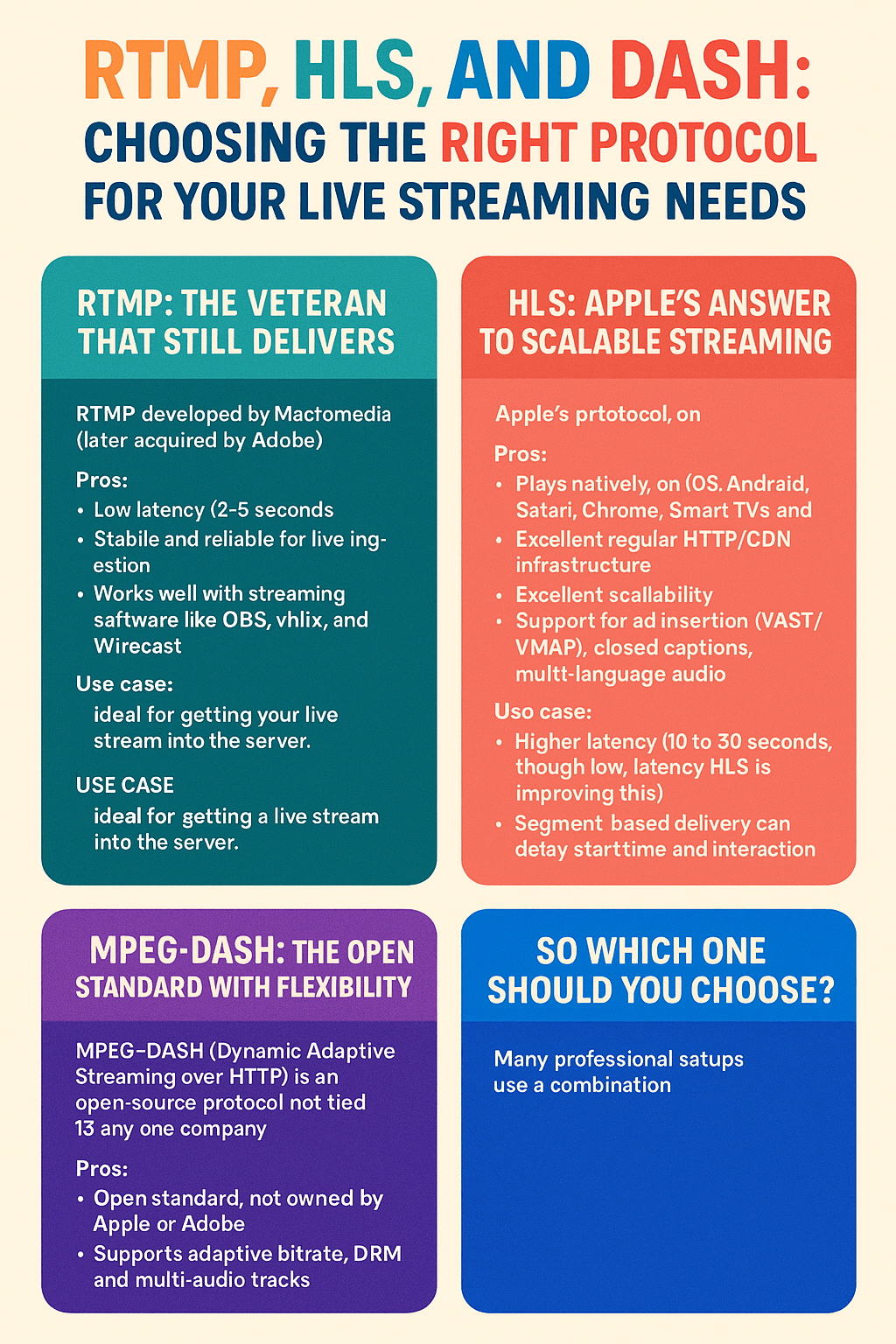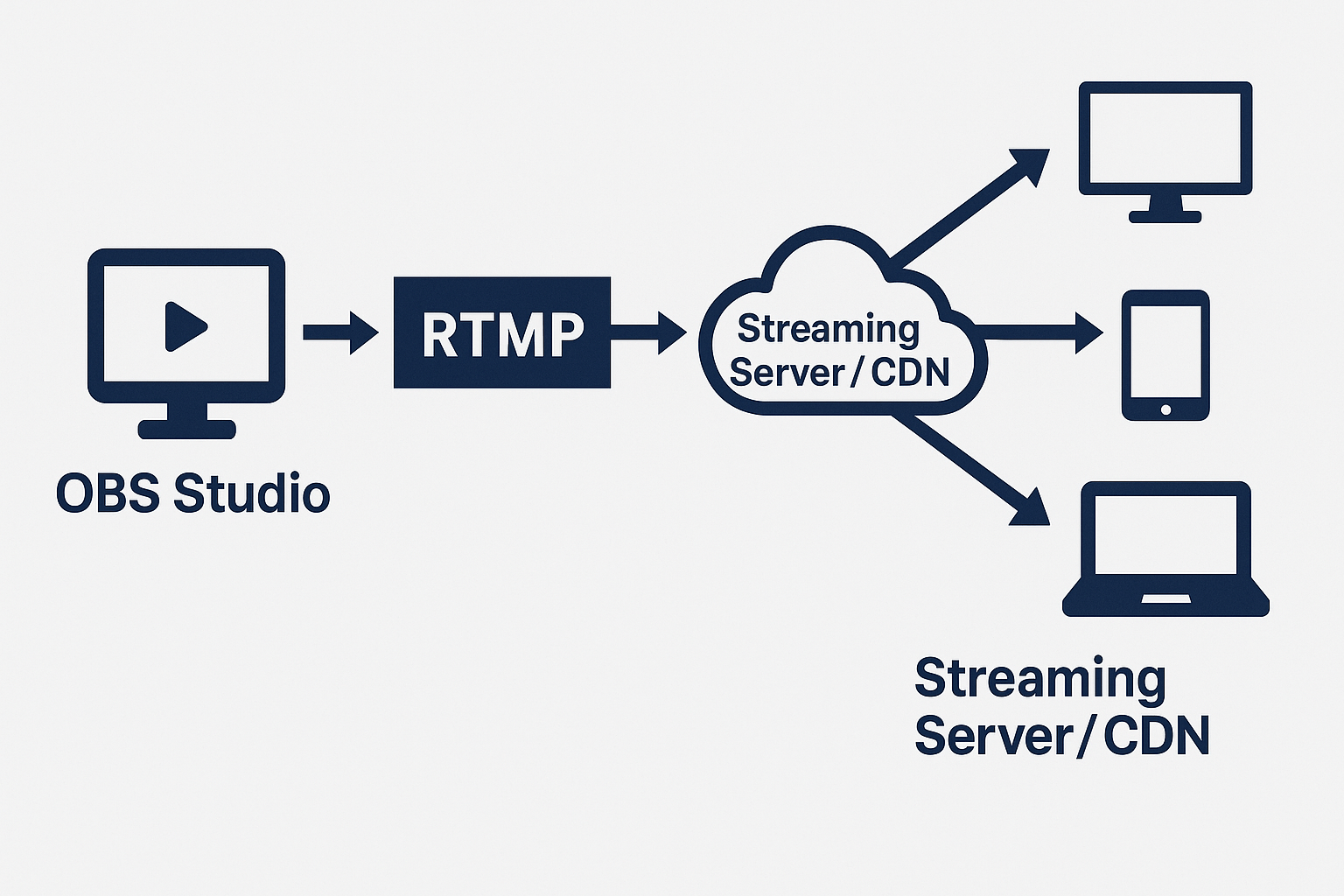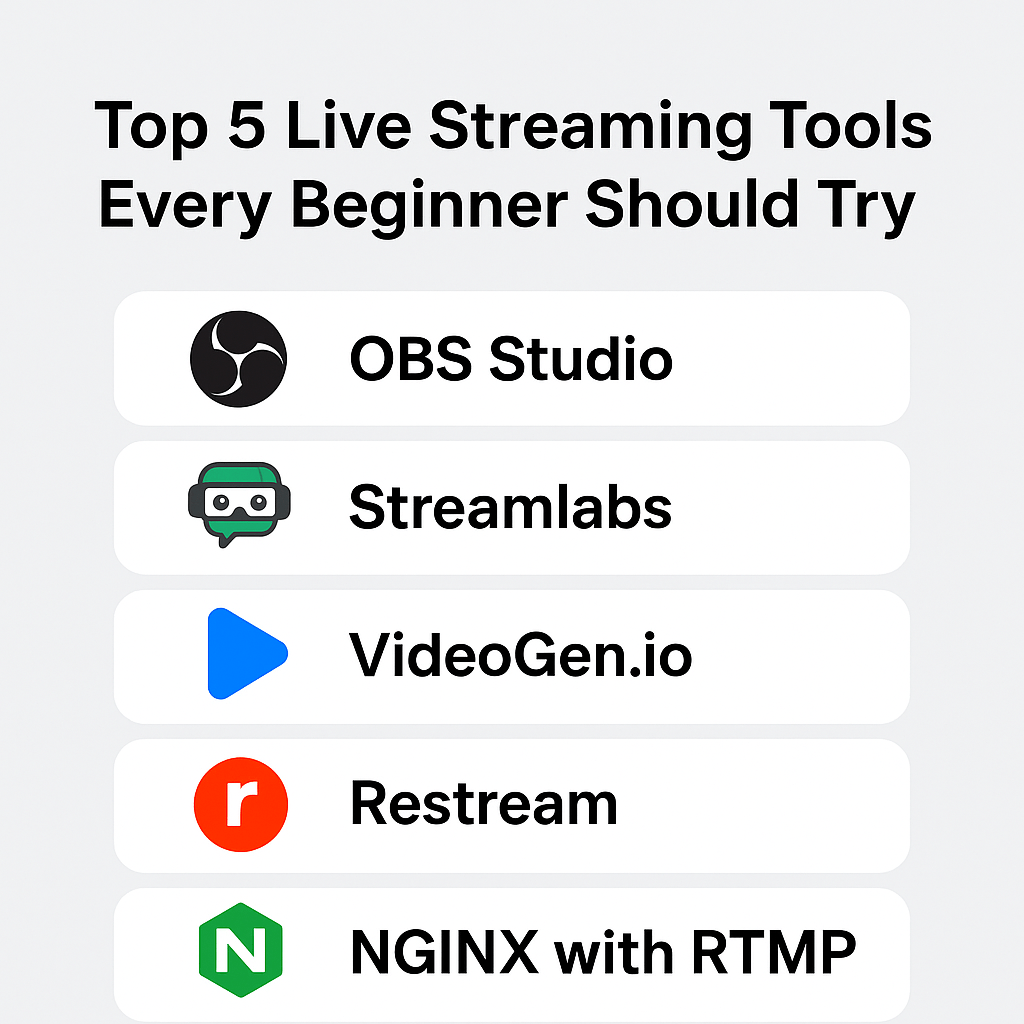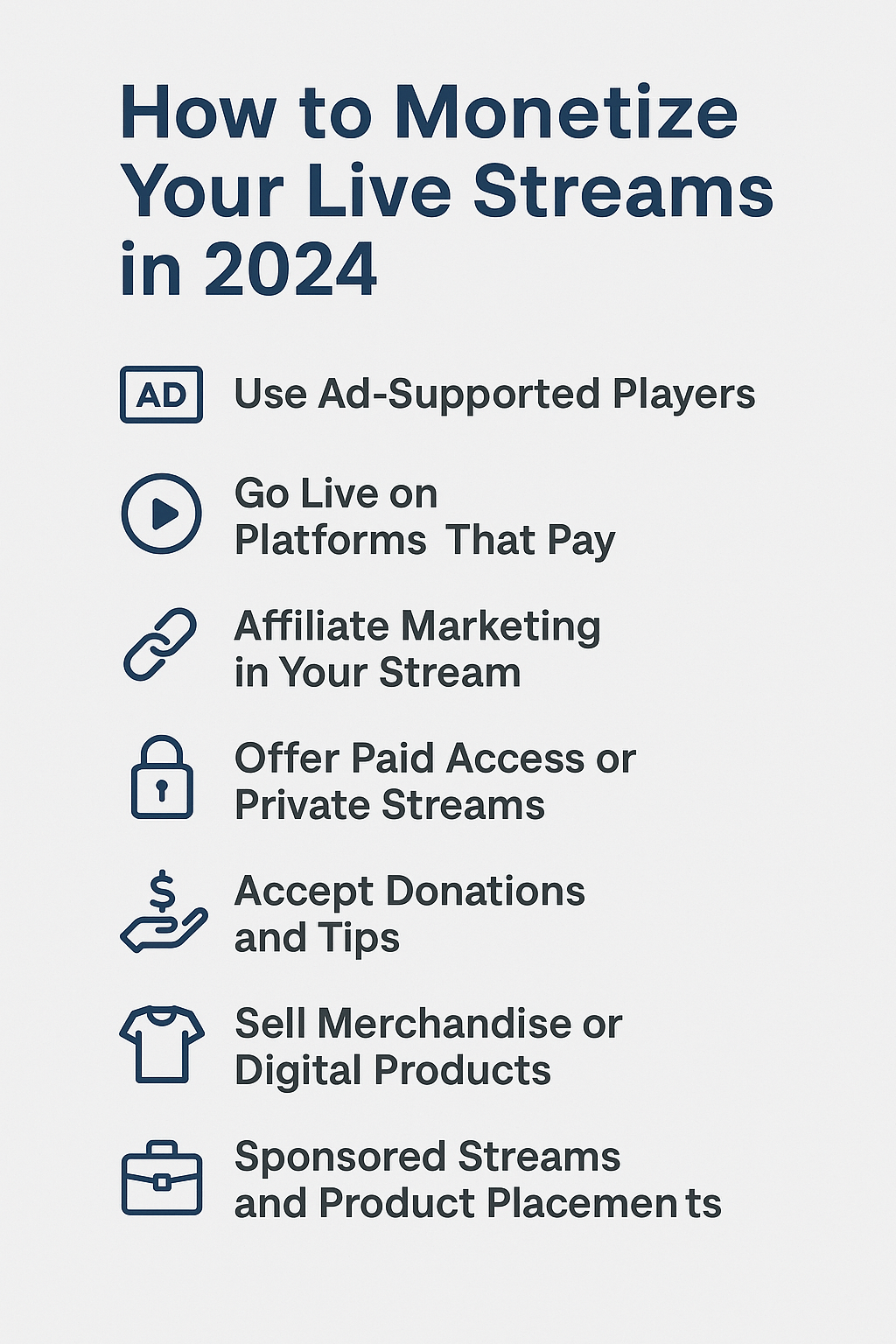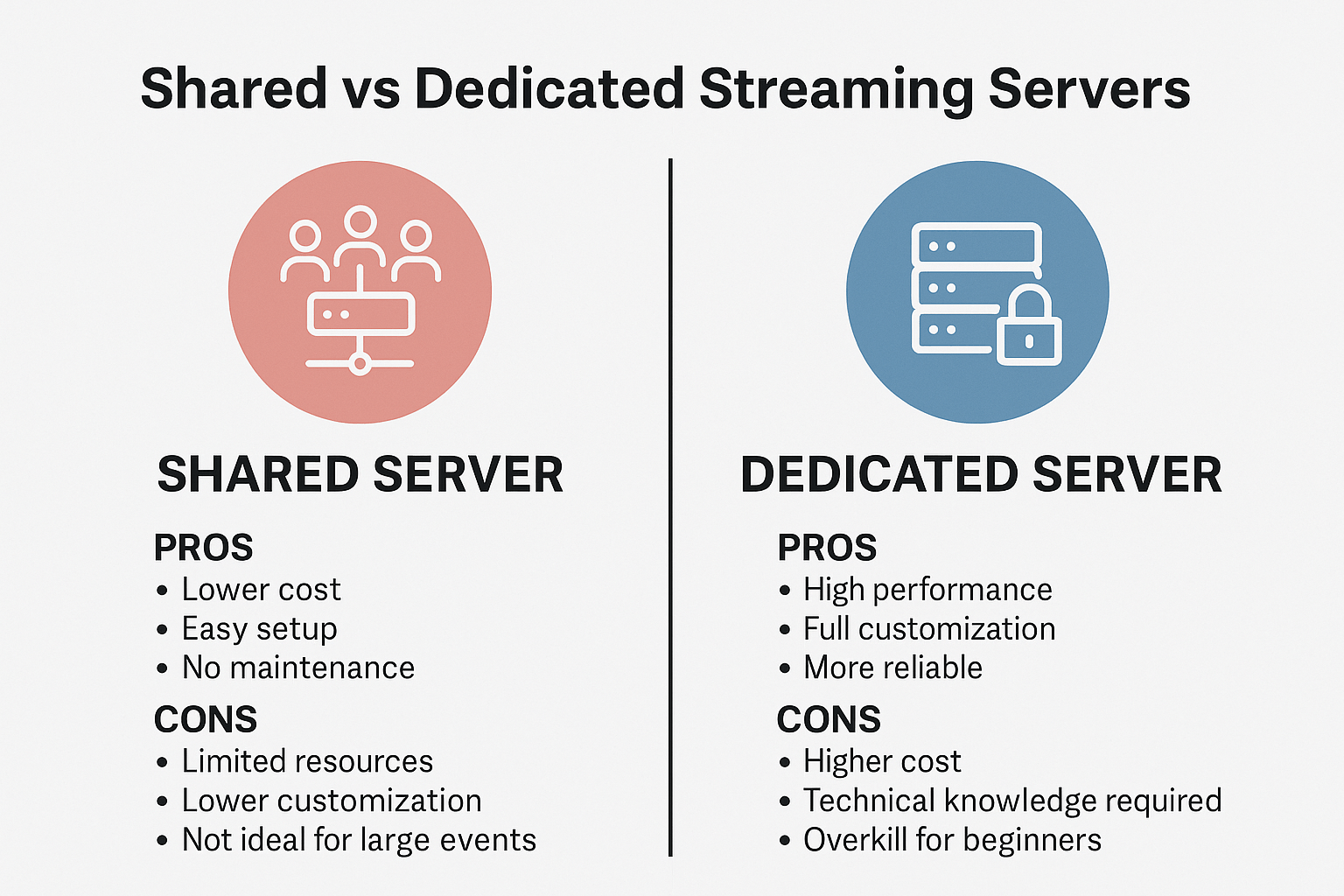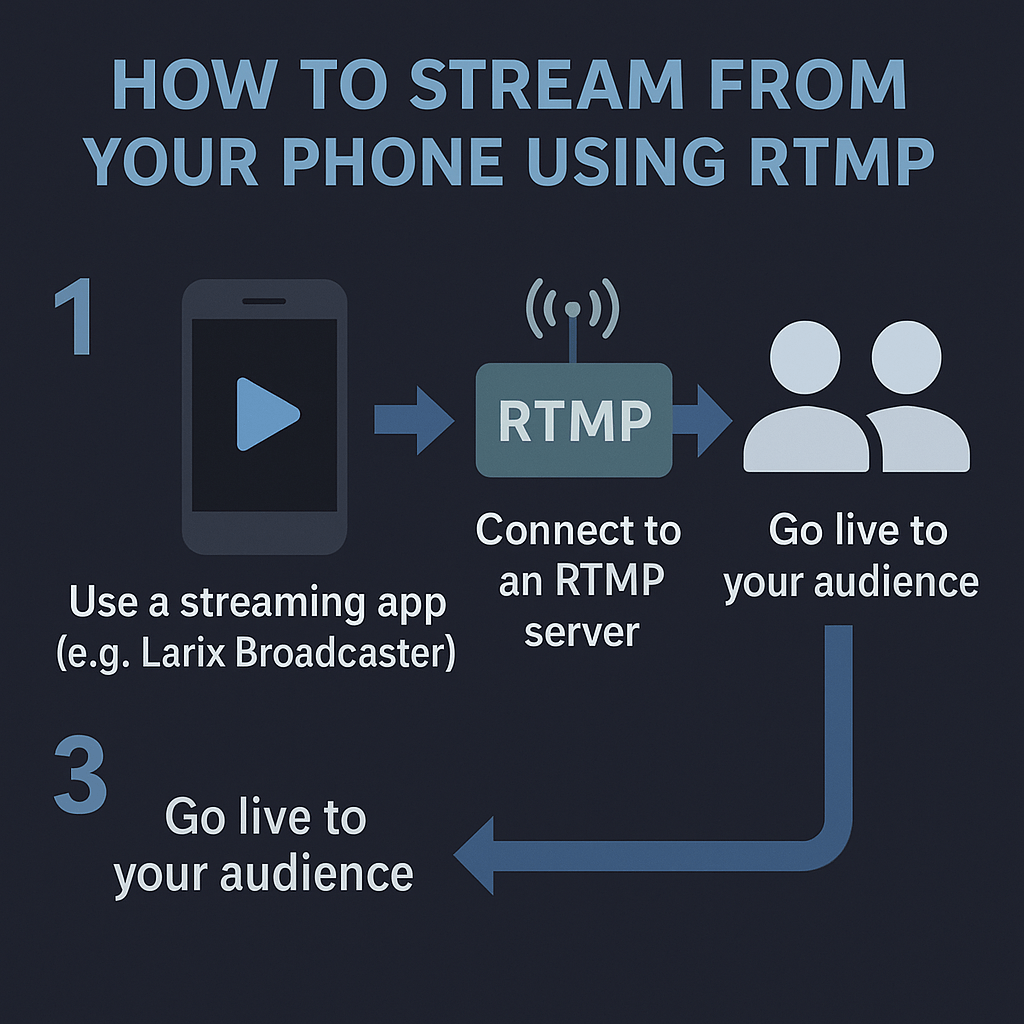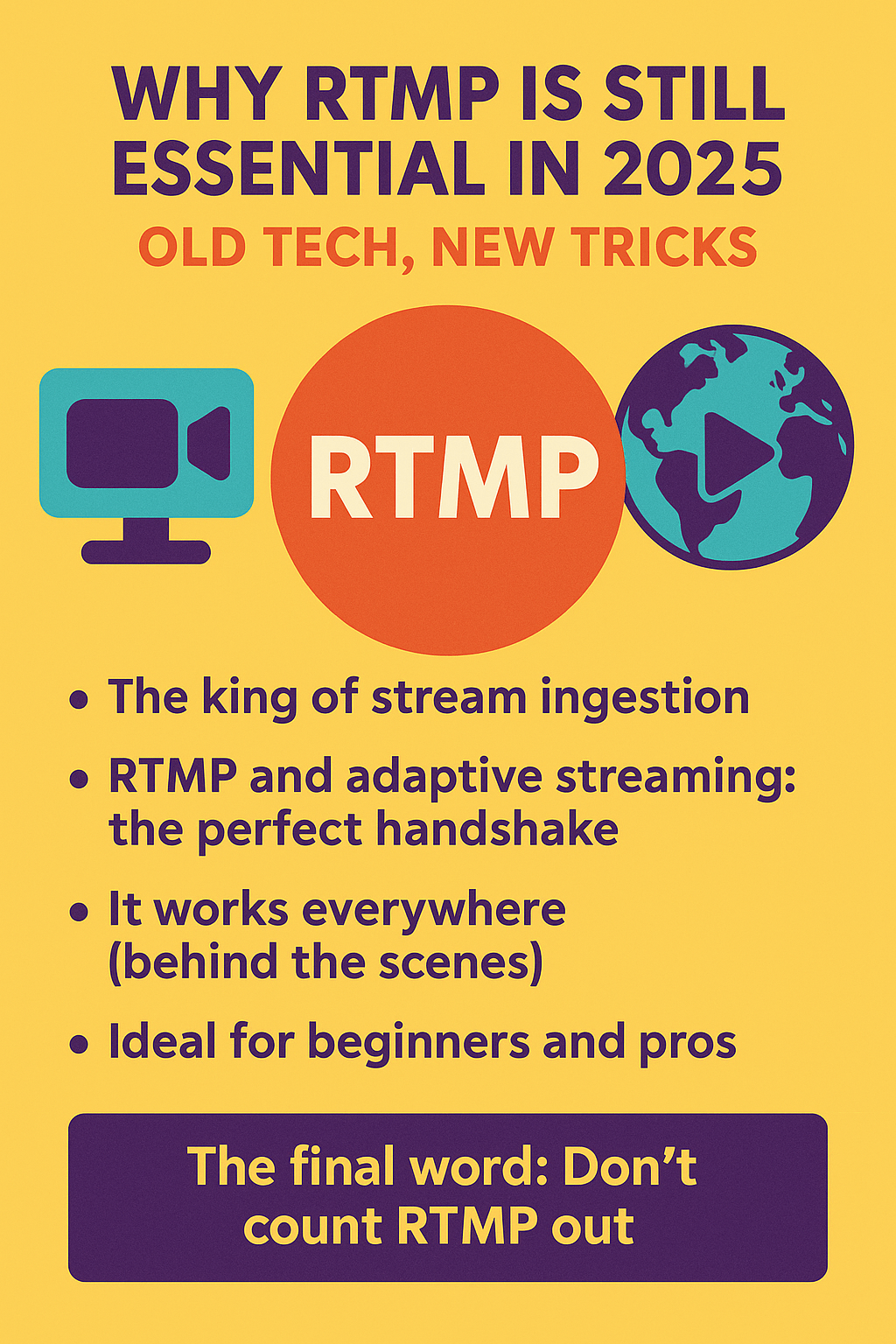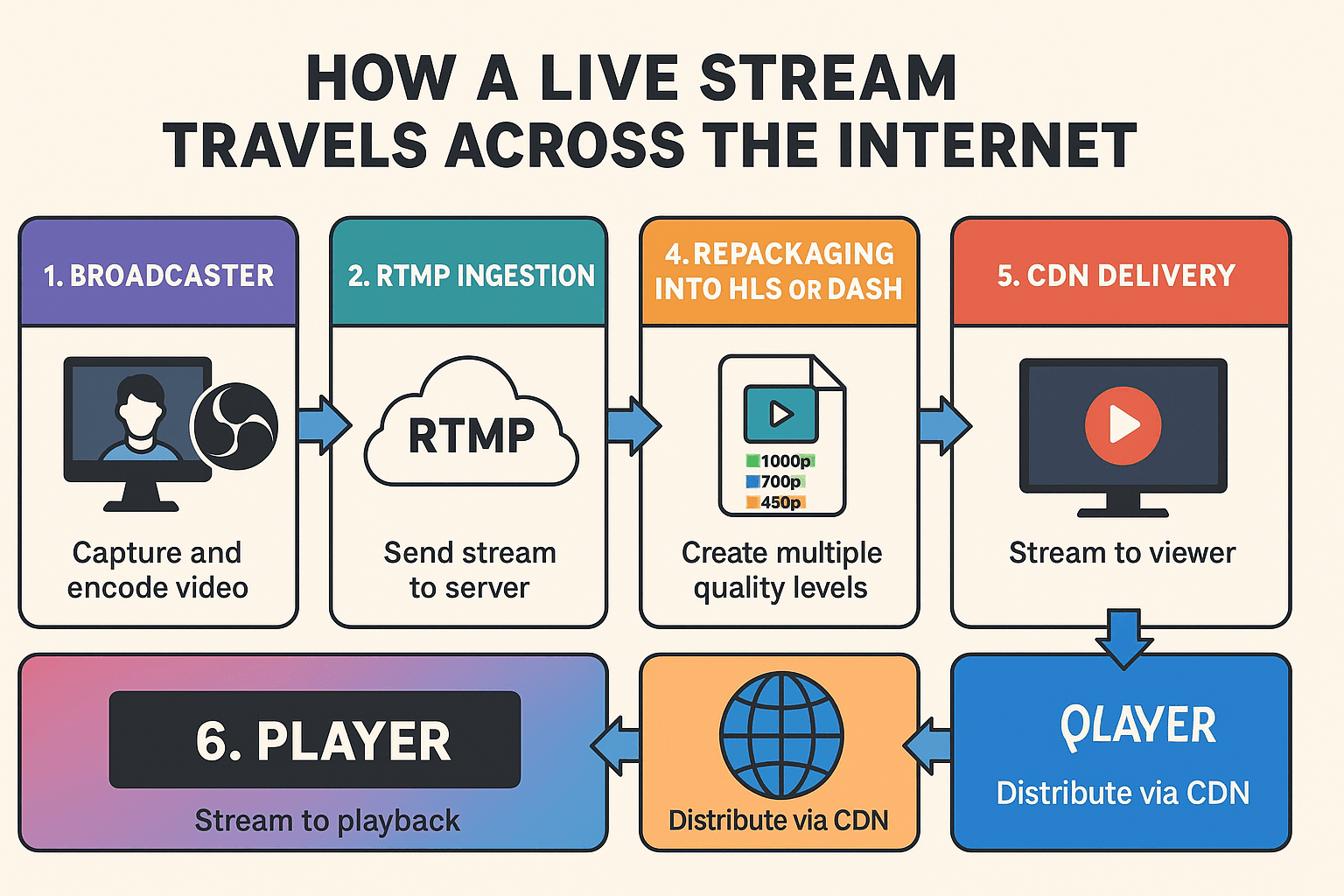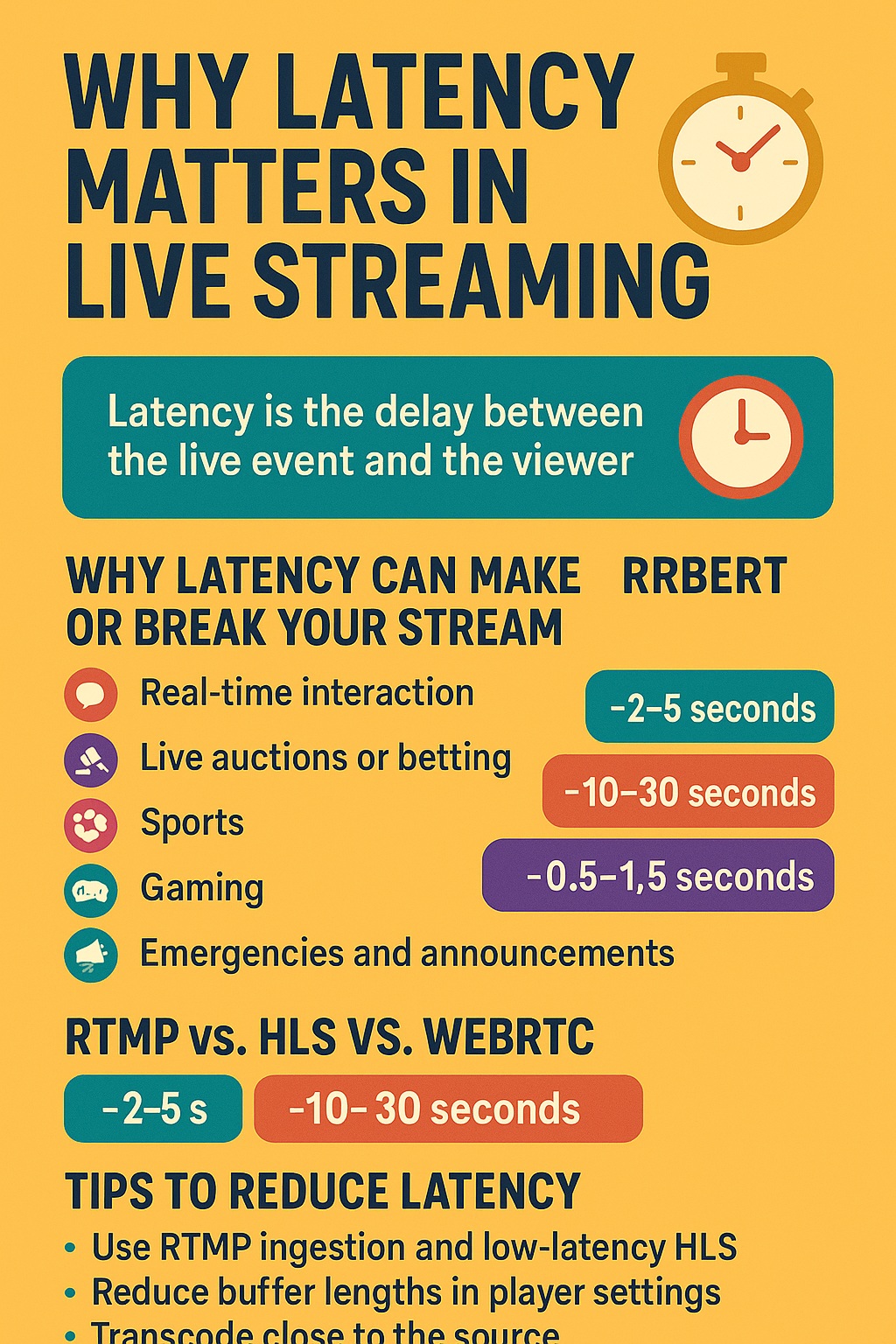Live streaming isn’t just about plugging in a camera and going live. Behind the scenes, different protocols are working to deliver that stream efficiently to viewers around the world. Among the most popular are RTMP, HLS, and MPEG-DASH. Each has strengths and weaknesses, and the right choice depends on your audience, latency needs, monetization plans, and playback compatibility.
Let’s break them down.
RTMP: the veteran that still delivers
RTMP (Real-Time Messaging Protocol) was developed by Macromedia (later acquired by Adobe) and was once the standard for streaming video. It’s still widely used today—especially for ingesting streams (that is, sending the stream from the broadcaster to the server).
Pros:
- Low latency, around 2-5 seconds
- Stable and reliable for live ingestion
- Works well with streaming software like OBS, vMix, and Wirecast
Cons:
- Doesn’t play natively on most modern browsers and mobile devices
- Requires Flash for playback (which is now deprecated)
- Usually needs to be converted into HLS or DASH for actual viewer delivery
Use case: RTMP is ideal for getting your live stream into the server. From there, you can repackage the stream into HLS or DASH for viewers. This is how services like Wowza or your own RTMP server setups typically operate.
HLS: Apple’s answer to scalable streaming
HLS (HTTP Live Streaming) is Apple’s protocol, and it’s now one of the most widely supported formats for live and on-demand video.
Pros:
- Plays natively on iOS, Android, Safari, Chrome, Smart TVs, and more
- Works over regular HTTP/CDN infrastructure
- Excellent scalability
- Supports ad insertion (VAST/VMAP), closed captions, multi-language audio
Cons:
- Higher latency (10 to 30 seconds, though low-latency HLS is improving this)
- Segment-based delivery can delay start time and interaction
Use case: HLS is perfect for public-facing broadcasts where device compatibility is key. It’s a great option for mobile viewers, monetization with ads, and long-form live content.
MPEG-DASH: the open standard with flexibility
MPEG-DASH (Dynamic Adaptive Streaming over HTTP) is an open-source protocol not tied to any one company. It’s similar to HLS in that it delivers video in small segments over HTTP.
Pros:
- Open standard, not owned by Apple or Adobe
- Supports adaptive bitrate, DRM, and multi-audio tracks
- Works well with HTML5 players like Shaka Player or Video.js
Cons:
- Not supported natively on iOS Safari
- Browser support is improving, but still lags behind HLS
Use case: DASH is a good choice for developers looking for an open solution with advanced features, or for environments where you control the playback (e.g. your own app or custom HTML5 player).
So which one should you choose?
In reality, many professional setups use a combination. For example:
- Use RTMP to send the stream from OBS to your RTMP server
- Transcode and repackage into HLS and/or DASH for public viewing
- Use a player like JWPlayer or Video.js that can handle multiple protocols
If your audience is mostly mobile or uses Smart TVs, HLS is essential. If you’re building a custom app or platform and want full control, DASH gives you more flexibility. And for live broadcasting where latency matters—such as auctions or interactive shows—RTMP ingestion plus WebRTC for low-latency viewers is a powerful setup.
Final thoughts
Choosing the right protocol isn’t just about technology. It’s about knowing your audience, understanding your distribution strategy, and thinking long-term. RTMP might be old, but it’s not dead. HLS dominates mobile. DASH is growing. And if you’re serious about streaming, your platform should be ready to support them all.


